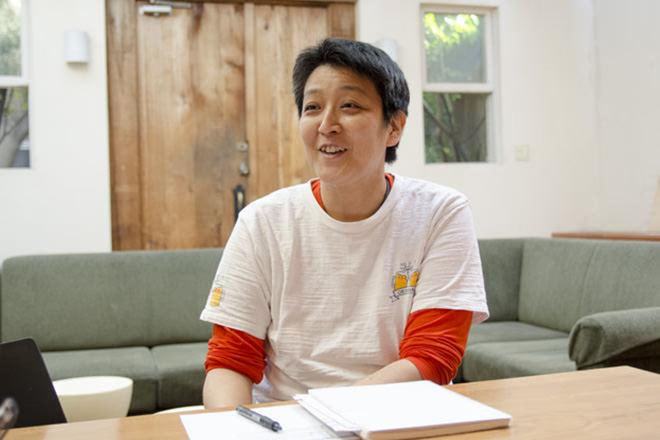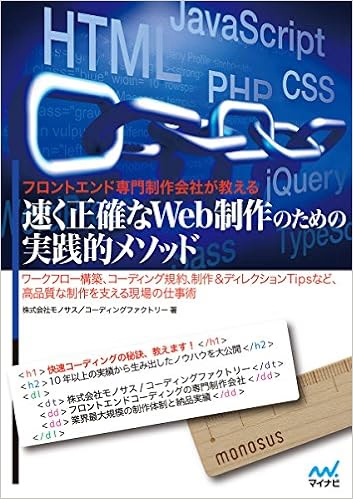Today, a book created by the Coding Factory Club was released by Mynavi Publishing!
The title is "Practical methods for fast and accurate web production taught by a specialist front-end production company."
This book compiles practical methods used in web production, aimed at a wide range of people involved in web production, including coders, front-end engineers, and directors.
Coding Factory (hereinafter referred to as CF) has undertaken a variety of initiatives, including the free distribution of " Coding Guidelines ," serialization in "Web Designing" and "IT Shimbun," the release of e-books , the technical serialization " Coding Methodology " on the CF site, and seminars for the web industry that have been attended by a total of over 2,100 people.
CF has been working to improve skills and productivity across the entire web industry, so what is his message in this book?
Ahead of the release of this brand new book, we spoke to the CF members in charge of the book.
I want to communicate what is truly necessary at the production site
It all started with an invitation from Mynavi Publishing, who asked me if I wanted to publish a book. Mynavi Publishing has been helping me out for several years, including writing a serial for their magazine Web Designing and putting together a special feature on coding guidelines.
The environment surrounding web production is changing every day,
We will teach you practical methods that will enable you to respond flexibly to any situation.
With this in mind, we started a book publishing project. This project, which was full of firsts, was led by Kojima, head of the Coding Factory Department.

Kojima is very grateful to the members who managed to complete the project despite it being their first experience. He says he wants as many people as possible to read this book and work together to liven up the web industry.
First of all, I'm relieved that I was able to publish it safely (laughs).
It may sound like we're bragging, but we think it turned out to be a pretty good book.
Actually, I had originally planned to write a book that was more focused on coding techniques, but after many discussions with my team, we came to the conclusion that the way you organize and progress your work is just as important as being able to code quickly, so I consulted with my editor and revised the direction of the book.
In the end, I think it turned out to be an interesting book that isn't what you would call "the technical book."
Of course, there are technical methods such as CSS design and coding guidelines, but there are also pages about how to proceed with the work and the process. Moreover, it is full of our real-life experiences, as if we were talking to the person next to us when they were in trouble and asking them, "What if we did it this way?"
When we talk about improving productivity, we tend to talk about speed and technology, but if the way you work isn't optimized in the first place, your productivity won't increase and you won't have time to concentrate on coding, so I think this is a very useful content in that sense as well. Moreover, unlike web technology, which is constantly evolving, this is know-how that never goes out of date (laughs).
During the production process, everyone involved put all their effort into writing the book, with the desire to convey what was truly necessary. To be honest, it was so difficult that I thought it might never be completed, but I think we have created a book that I can confidently recommend.
We will show you our "on-site work techniques"
As for the contents of the book, it is composed of five chapters covering four themes that are basically necessary in the coding phase, as well as methods and tips for production cases.
- Chapter 1: Production flow and environment construction
- Chapter 2: Establishing coding guidelines
- Chapter 3: Fast, accurate and safe coding methods
- Chapter 4: Key points for direction and checking
- Chapter 5: Web production techniques to improve quality and efficiency
The people in charge of writing the manuscript were the department manager, Kojima, as well as the coders, directors, quality control checkers, and members of Monosus Thailand. They worked diligently (and sometimes screamed?) on the sidelines of their regular production duties to write the manuscript.
Among them, Director Matsubara was the one who played a central role in coordinating the project.
We asked him about his thoughts on the book and what he recommends.

Matsubara, the director, was the key figure in the project. How could they present what they wanted to convey in a book, and what kind of structure would be best to convey it? Although he was confused by his first experience with publishing a book, he realized how interesting editing can be.
Each chapter is packed with CF know-how to date, but the one I would especially like you to read is "Chapter 4: Key points of direction and checking."
I think that most books about direction tend to be a bit textbook-like, but when you get to the scene, it's often not like that. This book also includes content about how to deal with those "non-standard" parts.
for example
- Not meeting the deadline
- The requested specifications cannot be realized
- There has been a lot of feedback from customers.
We offer specific suggestions from the perspective of the production team about "common things" that would make production staff jump at the chance to hear. Of course, this is just our way of doing things, but we take stock of our daily work and bring together the know-how that we think is important, so we think it will be a useful "gut point."
I am proud to say that I have never read a book that is so focused on the actual situation! (laughs) I definitely want you to read it.
Read this and develop your own "Web production method"
This book is packed with the on-site know-how that CF has cultivated over the years.
This book is recommended not only for those who work at web production companies, but also for freelancers, those in charge of operating their own companies' websites, and those who want to start working in the web industry.
I have summarized the key points so that readers can immediately put them into practice in their own environments, so I hope that this will serve as an opportunity for you to create your own "practical method" by adapting it to your own environment.
A book filled with the passion of CF members.
Please pick up a copy and read it!


